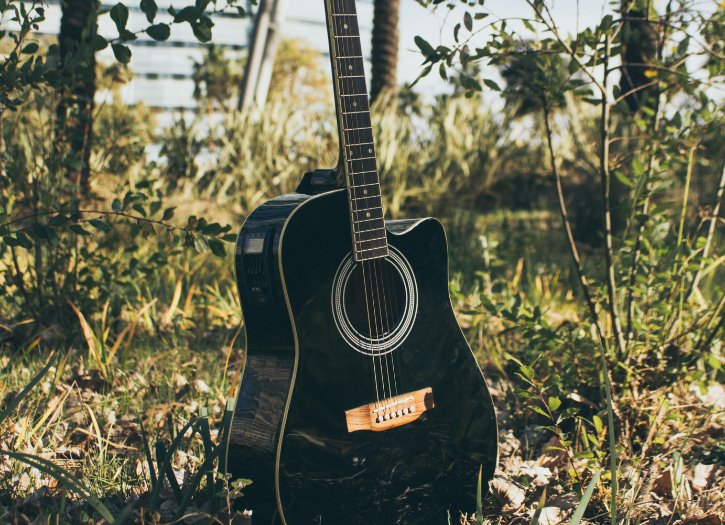Guitar solos range from unaccompanied works for a single guitar to compositions with accompaniment from a few other instruments or a large ensemble.
The accompaniment musicians for a guitar solo can range from a small ensemble such as a jazz quartet or a rock band, to a large ensemble such as an orchestra or big band. Unaccompanied acoustic guitar music is found in folk and classical music dating as far back as the instrument’s first use in western music, the use of an acoustic guitar as a solo voice within an ensemble dates back at least to the Baroque concerto. Composers of the Renaissance period who wrote for four course guitar include Alonso Mudarra, Miguel de Fuenllana, Adrian Le Roy and Guillaume de Morlaye. Composers of the baroque guitar include Gaspar Sanz, Robert de Visée and Francesco Corbetta.
The term “guitar solo” often refers to electric guitar solos played in blues and in rock. The use of a guitar solo as an instrumental interlude was developed by blues musicians such as Lonnie Johnson, John Lee Hooker, Muddy Waters, and T-Bone Walker, and jazz like Charlie Christian. Ernest Tubb‘s 1940 honky tonk classic, “Walking the Floor over You” was the first “hit” recording to feature and highlight a solo by a standard electric guitar–though earlier hits featured electric lap steel guitars.
Howlin’ Wolf, Muddy Waters, Willie Dixon, and Jimmy Reed played in Chicago in a style characterized by the use of electric guitar, sometimes slide guitar, harmonica, and a rhythm section of bass and drums. In the late 1950s, a new blues style emerged on Chicago’s West Side pioneered by Magic Sam, Buddy Guy and Otis Rush on Cobra Records. The ‘West Side Sound’ had strong rhythmic support from a rhythm guitar, bass guitar and drums and as perfected by Guy, Freddie King, Magic Slim and Luther Allison was dominated by amplified electric lead guitar. Other blues artists, such as John Lee Hooker had influences not directly related to the Chicago style. John Lee Hooker’s blues is more “personal,” based on Hooker’s deep rough voice accompanied by a single electric guitar.
These and other blues guitarists inspired the appearance of many virtuoso blues rock fusion soloists, beginning in 1963 with Lonnie Mack‘s first major recordings. Jimi Hendrix was a psychedelic guitarist, and a pioneer in the use of distortion and audio feedback in his music. Through these artists and others, blues music influenced the development of rock music. Another important blues rock guitar soloist in the 1960s and 1970s was Eric Clapton.
In the early 1970s, the Texas rock-blues style emerged, which used guitars in both solo and rhythm roles (e.g., Stevie Ray Vaughan).
Photo by Simon Weisser on Unsplash







Add Comment